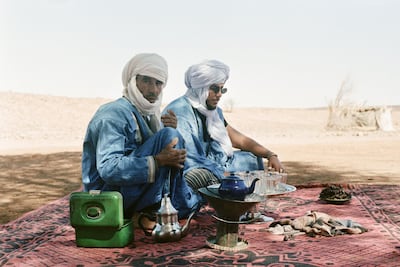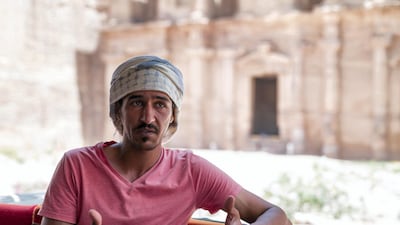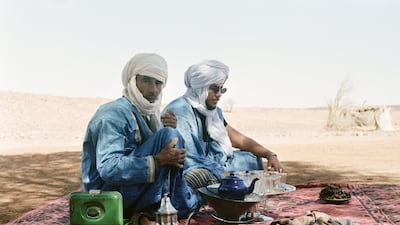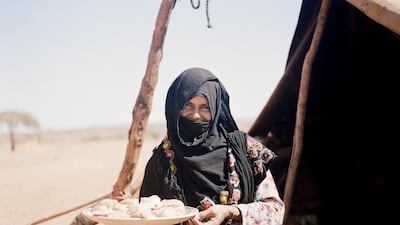“At stake is our way of life, our culture, traditions and, ultimately, our forests,” cautions Randy Borman from the Cofan tribe, one of the oldest surviving indigenous cultures in the Amazon.
“So far there are no active cases of coronavirus in the community, and we have established heavy fines for anyone breaking quarantine,” adds Borman, who is vice president of the Zabalo village in Ecuador’s rainforest.
Today, Borman isn’t speaking to me from Zabalo. Instead, he’s in Guayllabamba, a small town northeast of Quito where he regularly travels for his work, fostering relationships between his tribe and Ecuadorean authorities.
It’s what he was doing on March 16, when President Moreno suddenly announced a 60-day state of emergency that effectively shut down the country. He remains in regular contact with his tribe, who are currently only leaving the village under emergency circumstances to “make the hour and a half trip upriver to Playas de Cuyabeno to access internet and telephone signals”.

Borman isn’t your typical Cofan. Born in the jungle to Western missionary parents, he grew up with the riverine tribe in the canopies of the Amazon rainforest. His wife, Amelia Quenama – granddaughter of one of the late Cofan chiefs – is with him in isolation.
Back in the village, people are adhering to strict restrictions to try to stop the virus from reaching them. “This includes no visits from outsiders, no movement between communities and no trips to outside mestizo towns,” says Borman. “But the huge question is how long the communities will be able to maintain these restrictions, as basic supplies and medicines will run out.”
“Gasoline – a huge part of our lives as we travel our rivers with outboard motors, clear our fields with gas powered tools, and fuel our electric generation – is in short supply. We’re largely self-sufficient for food, but we rely on the outside world for salt, laundry soap and other basic items.”
The coronavirus pandemic is something of a balancing act for Cofan leaders, who weigh the impact of lengthy community lockdown against the risk of allowing the virus to enter. “As tribal leaders, we are tremendously aware that all it takes is one person getting the virus to set off the destruction of our villages,” warns Borman.
But this is not the tribe’s first battle. Smallpox, malaria and measles invaded the Amazon long before coronavirus did, and oil companies plundered the rainforest in the 1960s.
The Cofan used to number more than 20,000. Today, there are less than 1,000, scattered in communities along the Aguarico River. Borman worries that an outbreak of coronavirus could push the tribe to the brink of disaster.
Yet, despite the gravity of the situation, he retains a sense of optimism. As restrictions have shut down travel across the world, life for Ecuador’s indigenous tribes has improved, he says. “Paradoxically, much of our daily life changes for the better when the rest of the world shuts down.
“Many of our traditional activities take on new meaning and the pressure to produce, the fear of invasion from the outside and the fights against oil companies, illegal miners and commercial hunters go on hold – leaving us with time to kick back and be Cofans, at peace in our world.”
But should the virus reach the riverbanks, a health crisis looms. Only one out of the 14 Cofan villages in the Amazon has any medical infrastructure. “Unfortunately, we can expect almost no government support in the case that the virus should attack any of our villages,” explains Borman. “Realistically, we are totally on our own, and will be among the last people in the country to receive any real assistance.”
A loss of tourism affects the stewards of the earth
April to June is spring in the southern hemisphere and the peak tourism time in Ecuador as travellers flock to the region for rainforest walks, river camping and an immersion in age-old traditions. With tourism the main income for most Cofan people, the timing of the nationwide shutdown could not have been worse.
There are a few other sources of income, but nothing on the same level, says Borman. “Alternate cash sources such as cacao and coffee production do not compare to tourism.”
This could be devastating both for the tribe and the natural world, as despite accounting for only 5 per cent of the world’s population, indigenous tribes protect 80 per cent of the world’s biodiversity.
“This is not just about cute animals or possible medicines coming from Amazonia, nor is it about a colourful culture that people want to photograph. This is ultimately about the thin 'green line' of natural areas that provide environmental services to the rest of the world and hold at bay the worst effects of the global climate change crisis,” says Borman.
The harsh reality for a Moroccan Berber tribe that relies on tourism
Crossing continents to the world’s largest hot desert, the Aarib tribe that call Morocco’s Sahara home are also getting to grips with this daunting new reality.

Coronavirus has not yet touched the isolated Tuareg tribe who live deep in the desert, but its ripples have already disrupted life in their oasis village of Mhamid El Ghizlan.
For 28-year-old tour guide Adil Belaguid, there is no way to earn a living. “The main income of my tribe, and for the entire village, is tourism. And since nobody can travel now, we can't really see any way of making money.
“Many people own permanent camps out in the Sahara, and these need to be maintained year-round, with or without tourists,” says the Moroccan. This means toiling in one of the world’s hottest and driest places where temperatures regularly hit over 40 degrees, but with no income coming in.
“A lot of nomads out in the Sahara can't buy much food for their camels to eat now, because they are already struggling for food for themselves and their families,” adds Belaguid.
Until things improve, the tribe rely on the few resources they do have, such as dates, home-cooked bread and a few vegetables that can be grown in this climate. “We don't really know what other sources there might be, especially for the families that rely fully on tourism,” says Belaguid.
Despite this bleak scenario, things could be worse. If the coronavirus were to reach the oasis village, it would spell disaster. “There is just a small clinic here, but in case of any emergencies, people need to go to a bigger hospital and the closest one is hours away from us,” explains Belaguid. “Our tribe has been travelling the Sahara for centuries and it will be our pleasure and honour to show people around again; we hope we can get back to doing that soon.”
Drawing on faith in Jordan

In Jordan, similar shutdowns are in place. Travel restrictions put in place by Jordanian authorities to stem the spread of coronavirus have proven effective. At last count, Jordan had recorded 465 cases of the disease, an impressive statistic for a country with a population of almost 10 million.
But for 34-year-old Moath, a member of the Ammarin Bedouin tribe, life has taken a strange turn. Since March 20, the self-employed tour guide has had no work as travellers left Jordan and a suspension on international flights came into effect. At night, a strict curfew means no one can leave their home until 10am the next morning.
Moath lives with his wife and two small children and says: “It’s not easy to live like this, but we understand why it’s happening and we follow the rules.”
To date, Covid-19 has not reached Moath’s community, but life is becoming harder in Beidha Village. Located inside the boundaries of the archaeological park of Petra, the tribe relies heavily on tourism. “Those who are guides and drivers are completely dependent on tourism and the shutdown has really affected us,” Moath explains.
Some Bedouin have other sources of income, such as goats and chickens and, explains Moath, “because we are so close to one another, people help each other. We bake bread at our houses and we don’t live a very fancy life, so we are affected but maybe not so much as people in the cities are.”
Moath turns to his faith for guidance during this time. “Such things as this have happened before. As we know, one of the Hadiths of Prophet Muhammad said that if such a thing happens anywhere, if you’re in that particular place already, do not leave it. And if it has happened somewhere else, then do not go there. So we’re trying really hard to do that,” says the Bedouin.
A crisis for Mongolia's mountain tribes

Some 6,000 kilometres north east, in the mountains of Altai in Mongolia, a group of Kazaks are also relying on their faith to see them through the pandemic.
Mongolia’s only majority Muslim population live high in the pristine but unforgiving climate of Bayan-Ölgii. Today, the tribe has pulled its resources to purchase a sacrificial goat. As a group, they offer it up to Allah – praying to god that the virus sweeping the world will not reach their land.
So far, their prayers have been answered. But with China on one side, Russia on the other and the border with Kazakhstan less than 30 kilometres away, it could only be a matter of time before this changes.
In Ölgii, the province capital, a Covid-19 testing and quarantine centre has been set up and so far all the results have been negative.
But, over the last two decades, they have turned their livelihoods to focus on the country’s rapidly evolving tourism industry. Several Kazakhs plunged all their resources into an economy that has now halted. Each year, the annual Eagle Festival would bring around 6,000 tourists to the mountain province. Without this, many Kazakhs in Mongolia are left wondering how they will feed their families.
Aybek Daniyal is one of those people. The father of two owns ‘gers’ – the Mongolian word for the portable tents that the Kazakhs live in. Despite income being seasonal, renting these out to travellers is how he provides for his family.
Other Mongolians are in the same situation. "It’s not only the Kazakh, but more than 20 Tuvan nomadic families who are also very much dependent on tourists. They rent their horses out, book camel treks and reserve stays in their gers,” explains Adiyabold Namkhai from New Milestone Tours, a travel operator specialising in tours with Mongolia's nomadic communities.
In Ulaanbaatar, Mongolia’s capital, authorities are fighting to prevent Covid-19 from sweeping through the city. So far, their efforts have worked. Mongolia was the second country to close its borders to China and to date, has only registered 40 cases.
In the densely populated capital, international visitors are quarantined in hotels and hospitals, and flights in and out of the country are suspended.
The slopes of Altai lie 1,700 kilometres from the capital – a fact that is at once terrifying and comforting. The distance reduces the chances of the virus reaching Bayan Ughli, but if it does, the results will be devastating. “If the virus spreads here it will be very hard for authorities to come and help,” says Daniyal.
The first indigenous deaths in Brazil

Back to the Amazonia, tribes are already grappling with the immediate effects of Covid-19. In Brazil, an impending public health calamity emerged as reports came in of the first deaths in the country's indigenous communities linked to the virus.
Just a few days before these reports emerged, we reached out to the Adventure Travel Trade Association, which works closely with Brazil's remote Yanomani tribe.
“At the moment, the Yanomami people from Maturacá Village are isolated to protect themselves from the virus... we are struggling to get support to keep communities isolated and protected,” came the reply from Juliana Radler, a member of the ISA Social Environmental Institute.
Days later, on April 11, reports from the northern state of Roraima confirmed that a 15-year-old Yanomami boy had died of COVID-19, becoming the second indigenous person in Brazil to die of the virus.
This number continues to rise, as do confirmed infections. On Sunday, May 3, there were 107 cases of the virus among the Amazon's indigenous people, said Brazil’s Indigenous People Articulation.
Since then, several global figures and celebrities including Madonna, Oprah, Brad Pitt and Paul McCartney, have joined journalist Sebastião Salgado in an open letter urging Brazilian authorities to step up protection for the country's tribes.
"Five centuries ago, these ethnic groups were decimated by diseases brought by European colonisers … Now, with this new scourge spreading rapidly across Brazil … [they] may disappear completely," reads the petition.
It seeks to protect several of the tribes that Unesco has deemed among the most vulnerable groups of people in the world.
Factors for this include “geographical isolation and poverty, which results in not having the means to pay the high cost for transport or treatment. This is further compounded by discrimination, racism and a lack of cultural understanding and sensitivity,” explained a United Nations report.
Indigenous tribes also often have disproportionately high rates of existing medical conditions, including diabetes and respiratory disease. Combined with low immunity levels for foreign diseases, many native tribes are treading water in a lethal cocktail of susceptibility.
In Chile’s Araucanía region, where the majority of the country’s indigenous populations live, the coronavirus has hit hard.
“In our region, we have the biggest rate of infected people, compared to other cities in Chile with lower populations,” explains Romá from local tour company Rutas Ancestrales Arucarias.
“Most of the cases are in Temuco, the capital of the region. Kurarewe, our town, is 140km from Temuco and has a population of around 7,000. Half of the people live in rural areas, including most of the Mapuche families that we work with.”

The Mapuche are the largest ethnic group in Chile, constituting nearly 10 per cent of the country’s population. In a bid to battle the outbreak of Covid-19 in their region, age-old traditions are beginning to slip away.
“Many Mapuche cultural traditions have been put on hold. In the first week of May, the tribes typically celebrate the Walung fair, an event that commemorates the ancient practice of exchanging seeds. This year, it is cancelled,” details Romá.
Wiñol Tripantu [Mapuche New Year] coincides with the winter solstice in June and is another casualty of Covid-19, despite being one of the most important celebrations for the tribes. “It’s an inheritance from our ancestors but this year we have had to suspend it,” says Romá.
Huge job losses and health risks for indigenous tribes in Canada

This lack of assistance for vulnerable populations is something that Keith Henry, president and CEO of Indigenous Tourism Association of Canada, is all too familiar with. Working to defend the rights of the Metis, the First Nations and Inuit living across Canada, Henry is very aware of the dangers that covid-19 poses for these communities.
“We are a vulnerable population due to economic issues and higher rates of pre-existing health issues,” he explains. While the Canadian government has allocated funds to assist such communities, for Henry it is not enough. “Money alone is not the solution. Indigenous communities need more timely and effective testing.”
Even if they survive the pandemic, these indigenous people face a very uncertain future, with their main source of income having been wiped out.
“Last year indigenous tourism was Canada’s fastest-growing sector of the tourism economy. Our indigenous experiences, like culinary, outdoor adventure, festivals and powwows, were being embraced by the world,” says Henry.
“The effect of travel restrictions is already affecting indigenous community-owned tourism businesses. Some of our 1,900 businesses are on indigenous lands and have been completely shut down.
Even those that are not on First Nations lands are losing out. “We are anticipating losing an estimated 20,000 to 25,000 jobs of the estimated 40,000 people working in the industry," reveals Henry.
And, if the disease finds a way to penetrate these vulnerable communities, it will be an atrocity. Lack of medical care, pre-existing health conditions and little immunity to foreign disease puts the world's native people in the firing line of Covid-19.
Should that happen, it could lead to the extinction of several of the world's most ancient tribes, removing a piece of human history that we can never reclaim. It will also put the future of the world in peril.
This moment of crisis must stand as a chance for the rest of the world to “wake up to what we, as a people, are giving humanity,” says Randy Borman.
“The importance of groups like ours goes way beyond tourism. We are talking about our ability to protect, manage, and control huge areas of forests, mountains, wetlands and other vital ecosystems. Without these ecosystems, we stand naked to the effects of global climate change.”














